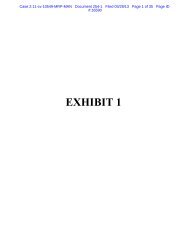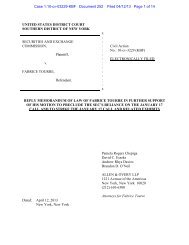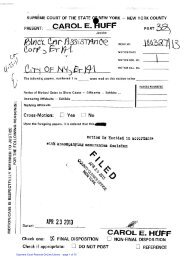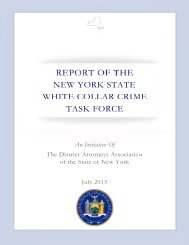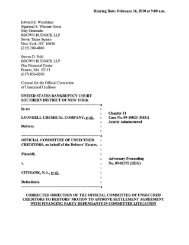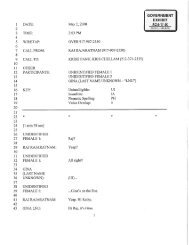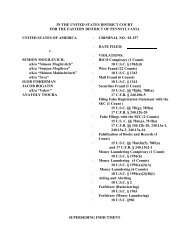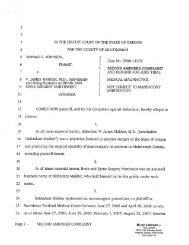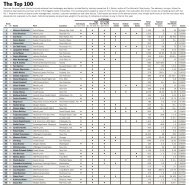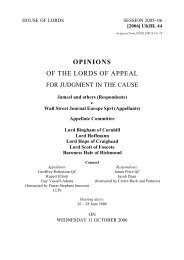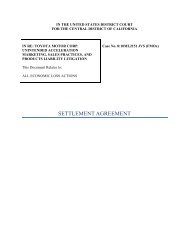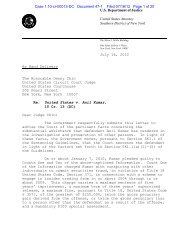Salz Review - Wall Street Journal
Salz Review - Wall Street Journal
Salz Review - Wall Street Journal
You also want an ePaper? Increase the reach of your titles
YUMPU automatically turns print PDFs into web optimized ePapers that Google loves.
7<br />
<strong>Salz</strong> <strong>Review</strong><br />
An Independent <strong>Review</strong> of Barclays’ Business Practices<br />
everyday behaviours. And as a result there was no consistency to the development of<br />
a desired culture.<br />
2.16 However, culture exists regardless. If left to its own devices, it shapes itself, with the<br />
inherent risk that behaviours will not be those desired. Employees will work out for<br />
themselves what is valued by the leaders to whom they report. The developing<br />
cultures across Barclays were still less consistent as a result of a highly decentralised<br />
business model, that tended to give rise to silos. This left a cultural ambiguity at the<br />
heart of the bank.<br />
2.17 Successfully navigating the financial crisis and all its challenges may have combined<br />
to amplify some particular cultural characteristics. The struggle for survival,<br />
independent of government, dominated its activities. This led to a ‘backs against the<br />
wall’ mentality and a strong drive to win, “winning” being an evident part of the<br />
investment bank’s culture. The management team and the Board had to work hard to<br />
pass the regulator’s capital stress tests. Many suspected that they would fail. The<br />
crisis also offered a special opportunity to have a truly credible US investment<br />
banking capability. And so Barclays acquired parts of Lehman Brothers in the US.<br />
This added a significant integration challenge.<br />
2.18 The institutional cleverness, taken with its edginess and a strong desire to win<br />
(particularly in the investment bank), made Barclays a difficult organisation for<br />
stakeholders to engage with, especially where those stakeholders were themselves<br />
dealing with unprecedented issues. It stretched relationships with regulators and<br />
resulted in them and the market questioning some of Barclays’ financial information,<br />
especially its valuations of illiquid assets, and its control systems. Barclays was<br />
sometimes perceived as being within the letter of the law but not within its spirit.<br />
2.19 Other characteristics added to the risk of less than ideal outcomes. There was an<br />
over-emphasis on short-term financial performance, reinforced by remuneration<br />
systems that tended to reward revenue generation rather than serving the interests of<br />
customers and clients. There was also in some parts of the Group a sense that senior<br />
management did not want to hear bad news and that employees should be capable of<br />
solving problems. This contributed to a reluctance to escalate issues of concern.<br />
2.20 Transforming the culture will require a new sense of purpose beyond the need to<br />
perform financially. It will require establishing shared values, supported by a code of<br />
conduct, that create a foundation for improving behaviours while accommodating<br />
the particular characteristics of the bank’s different businesses. It will require a public<br />
commitment, with clear milestones and regular reporting on progress. It will require<br />
Barclays to listen to stakeholders, serve its customers and clients well get on with the<br />
work to implement its plans and stay out of trouble. The complexity of Barclays’<br />
businesses makes this a particular challenge for its leaders. It will take time before<br />
it is clear that sustainable change is being achieved.



